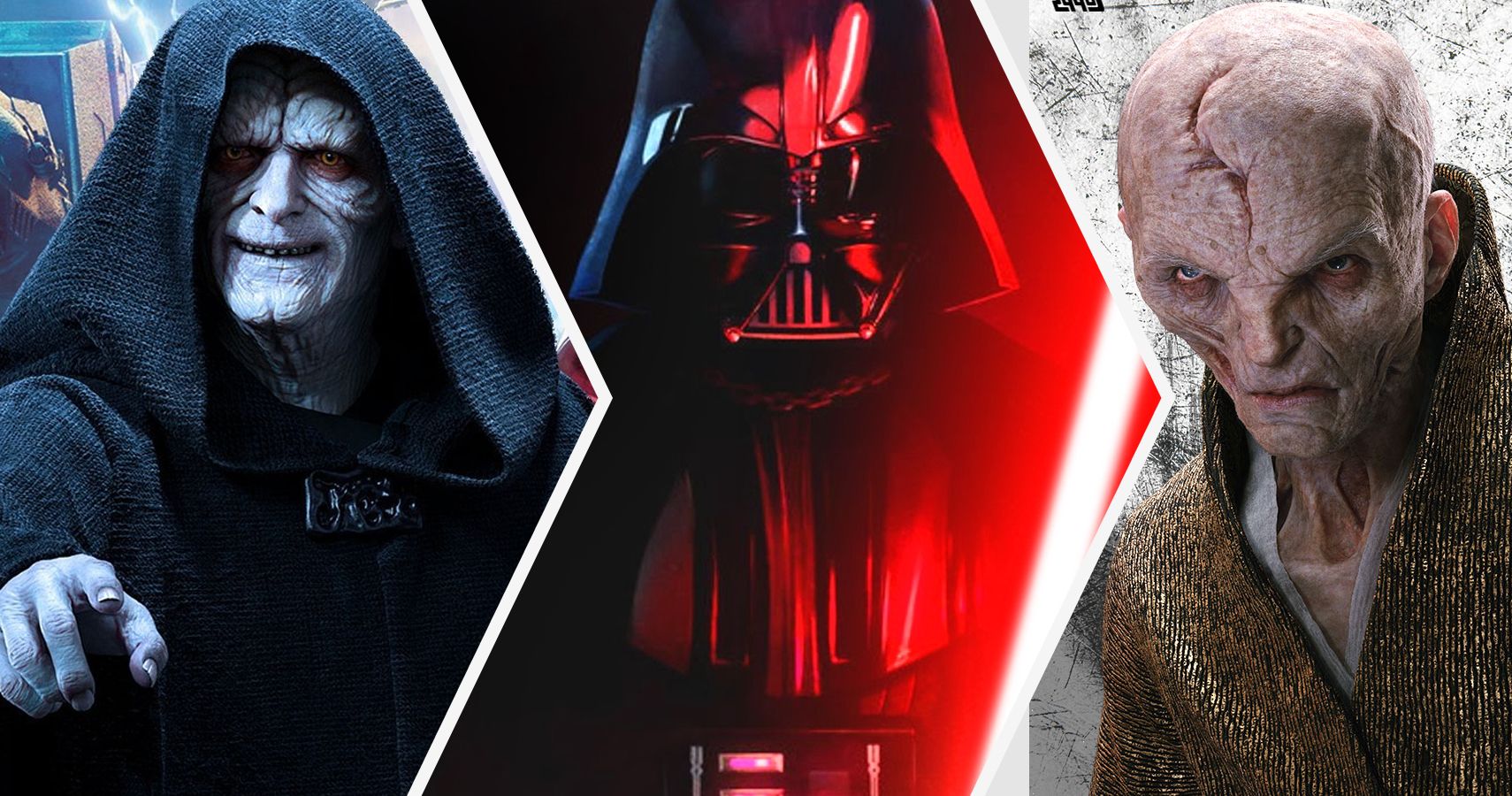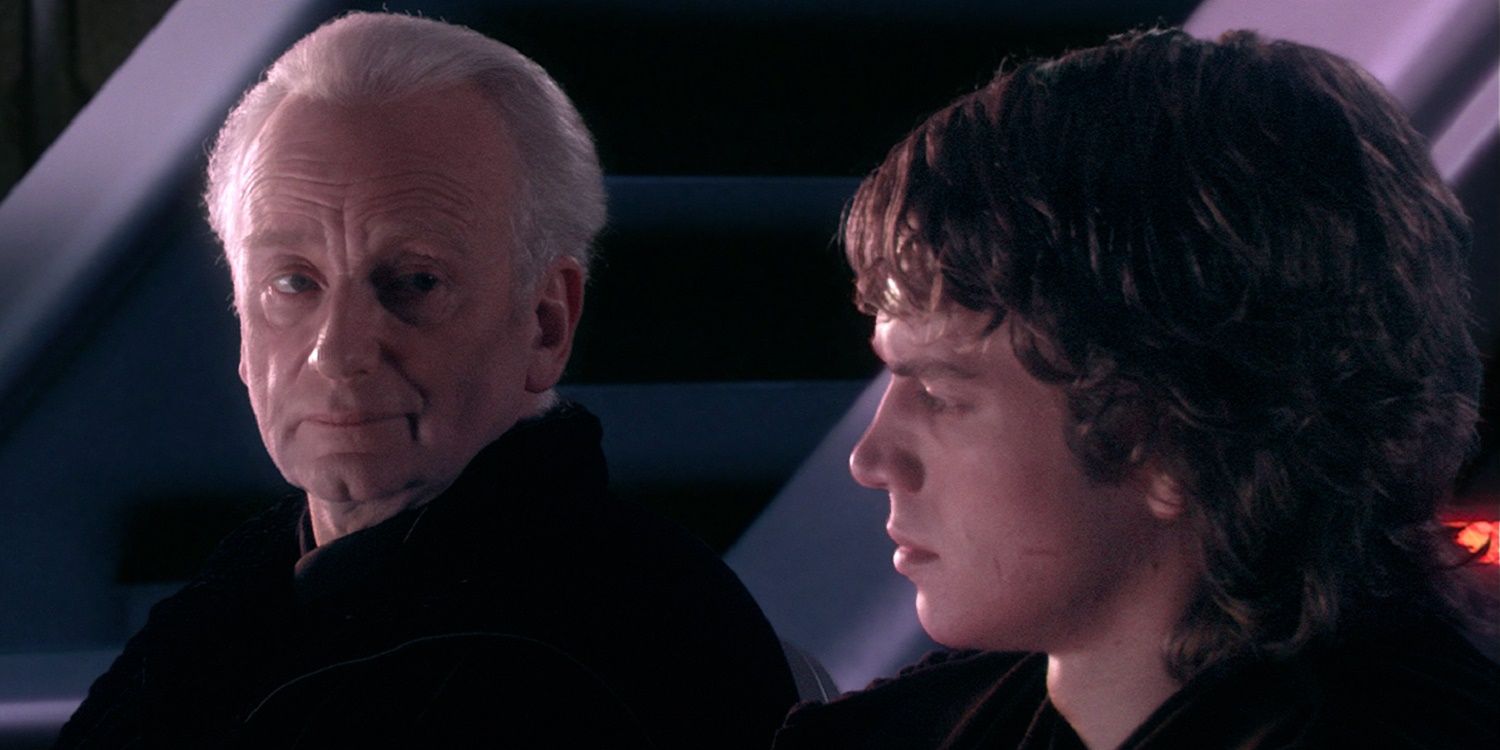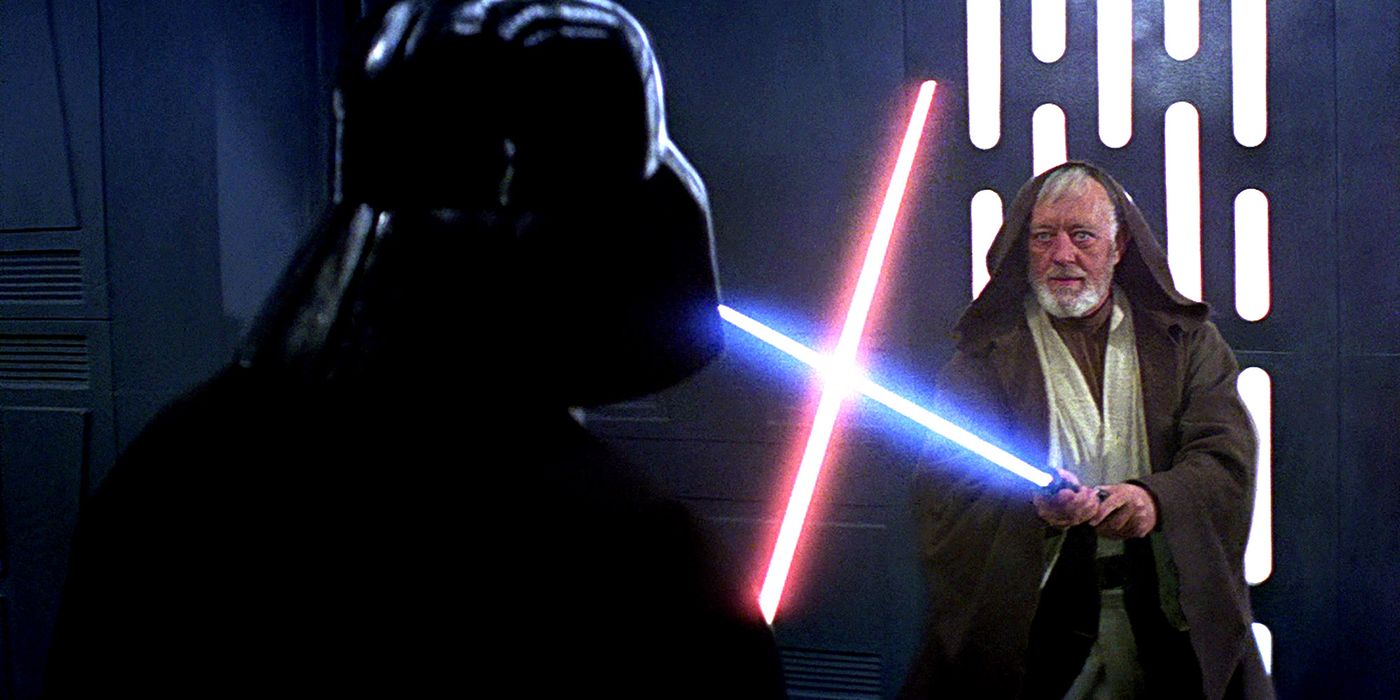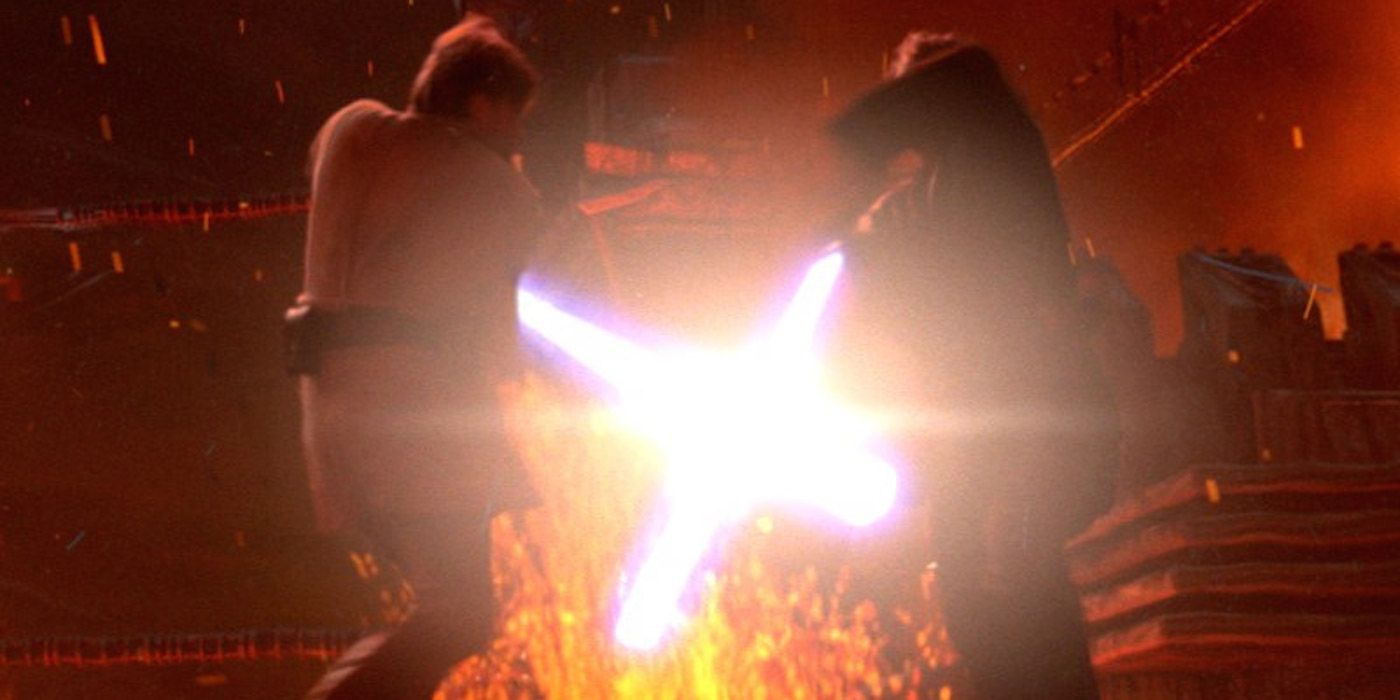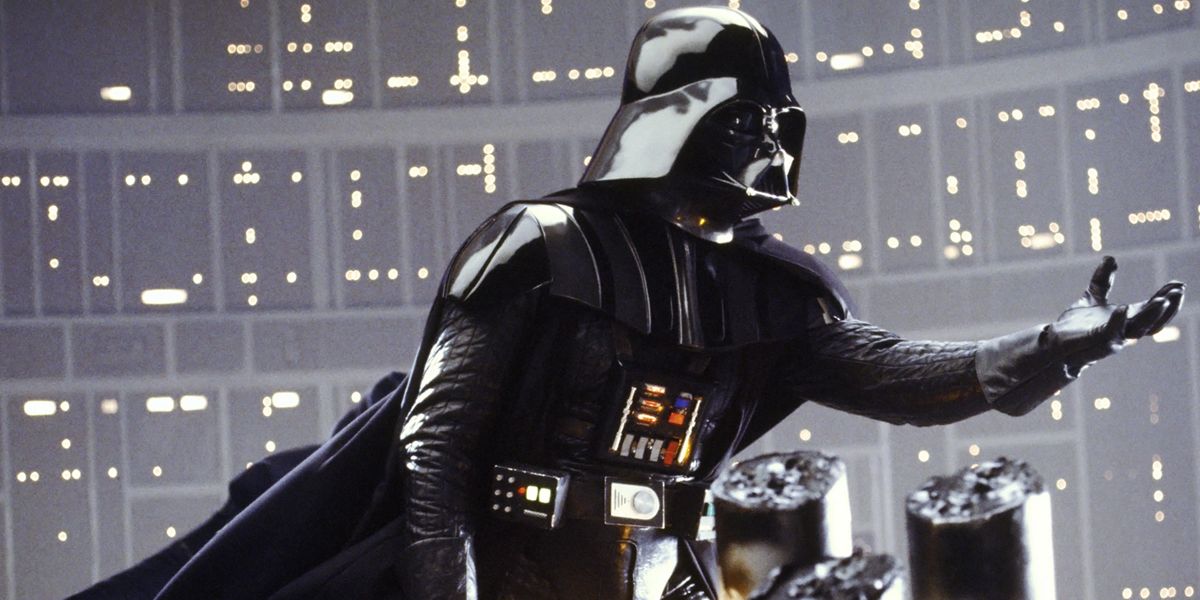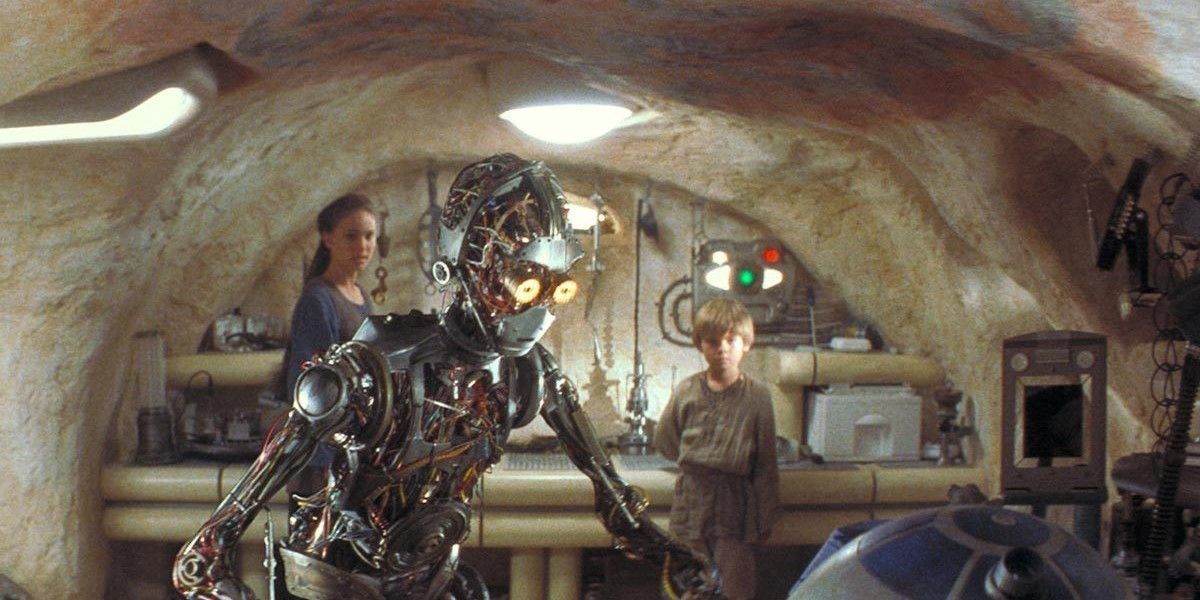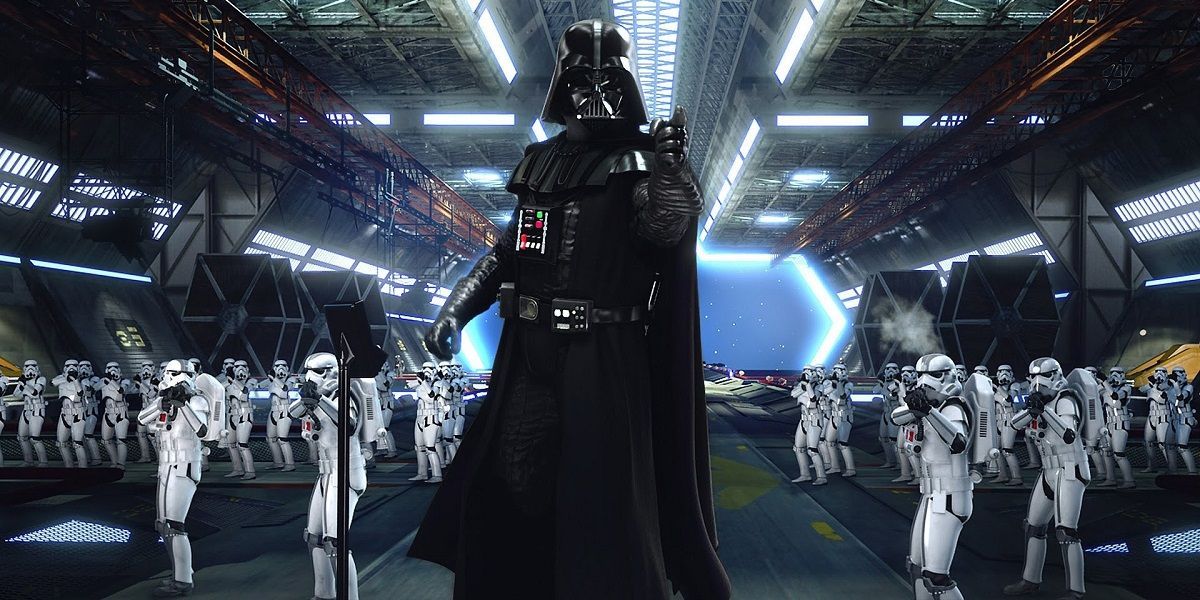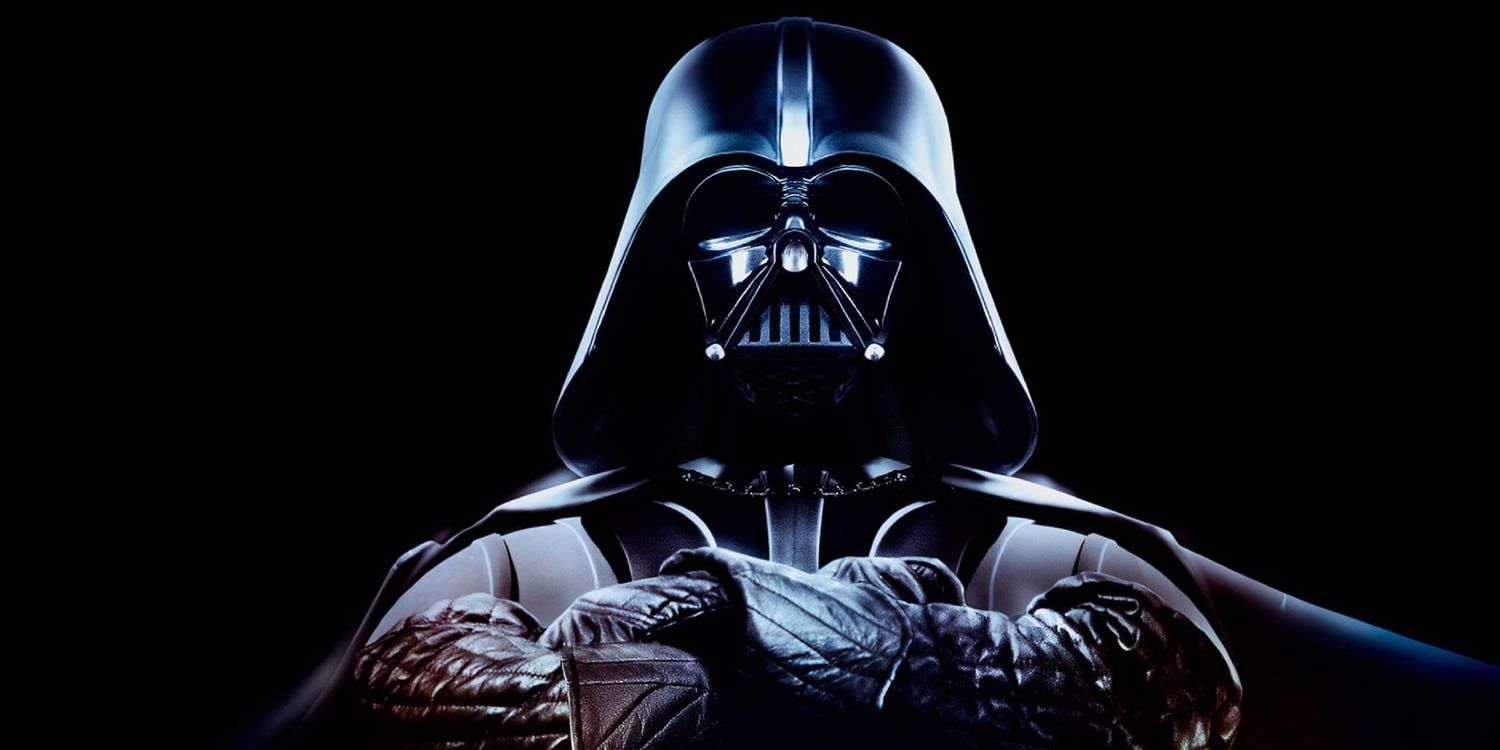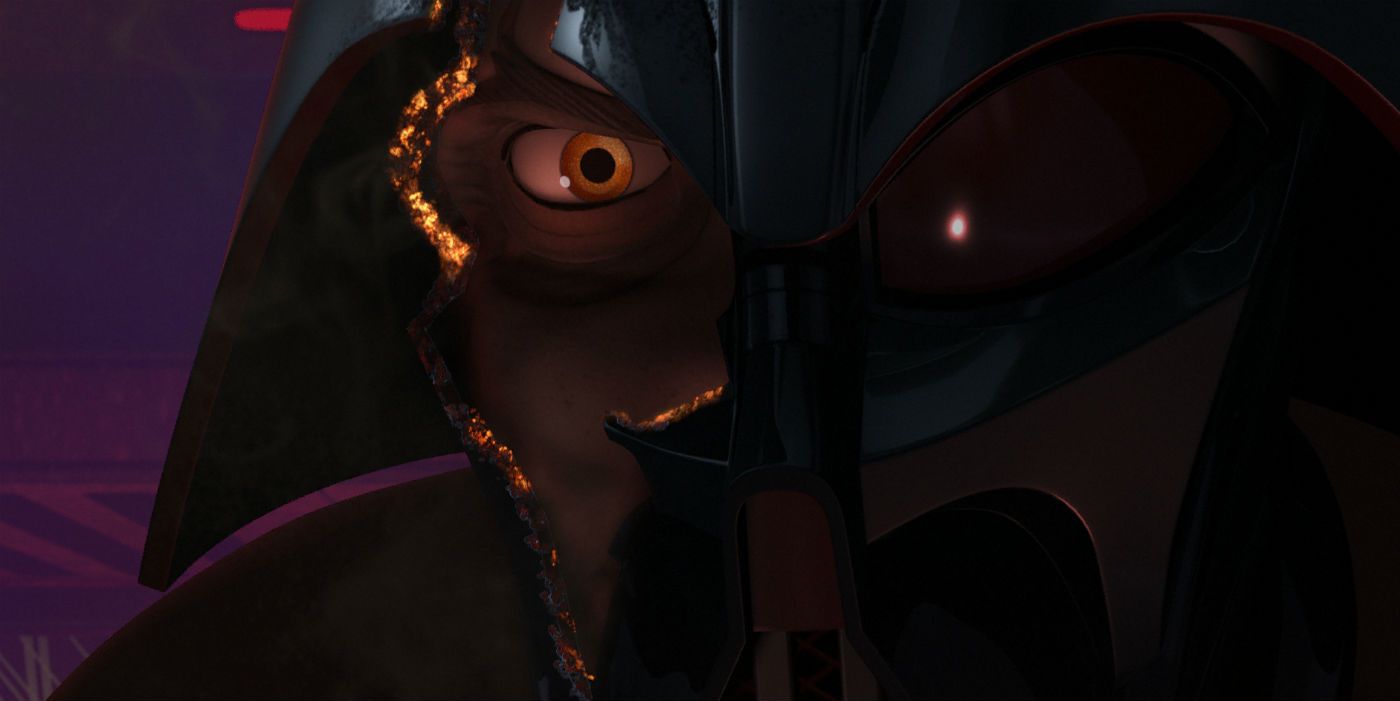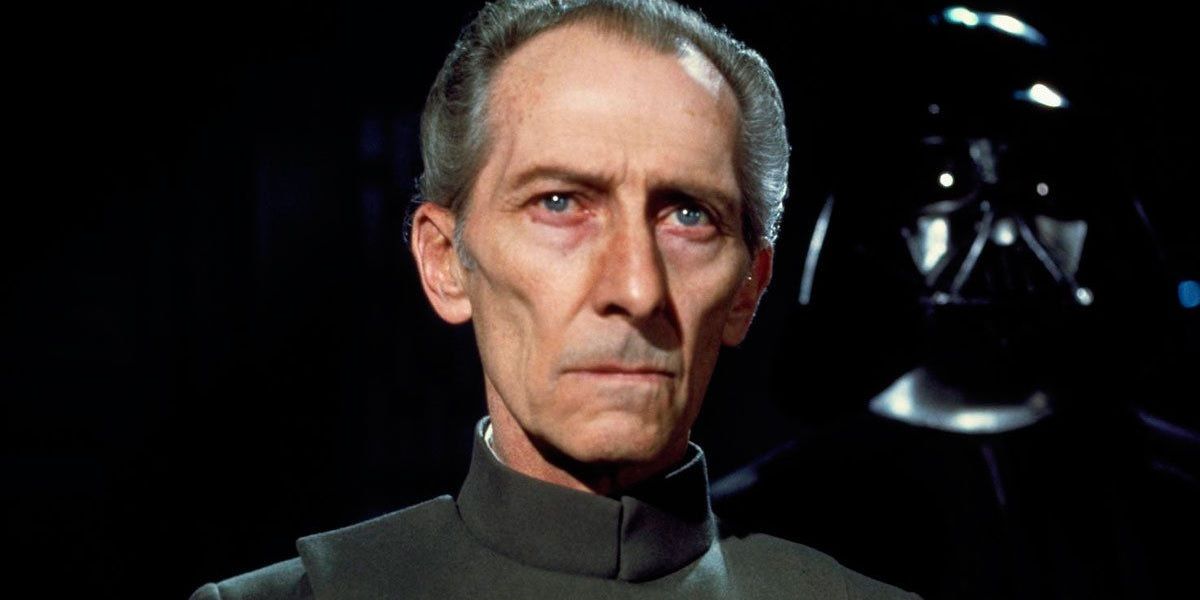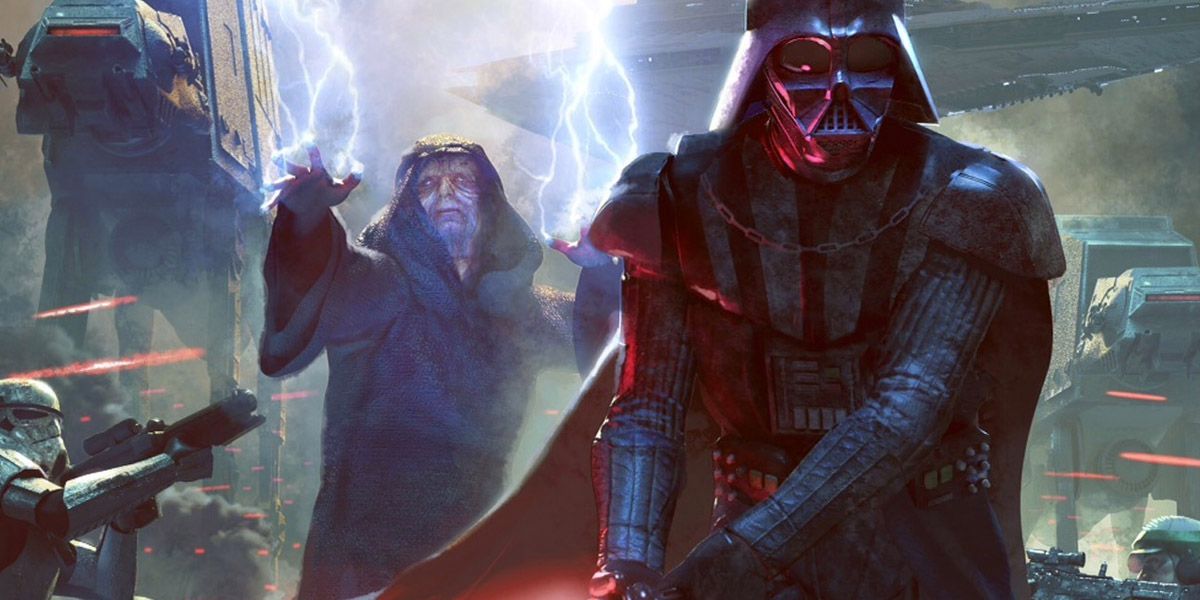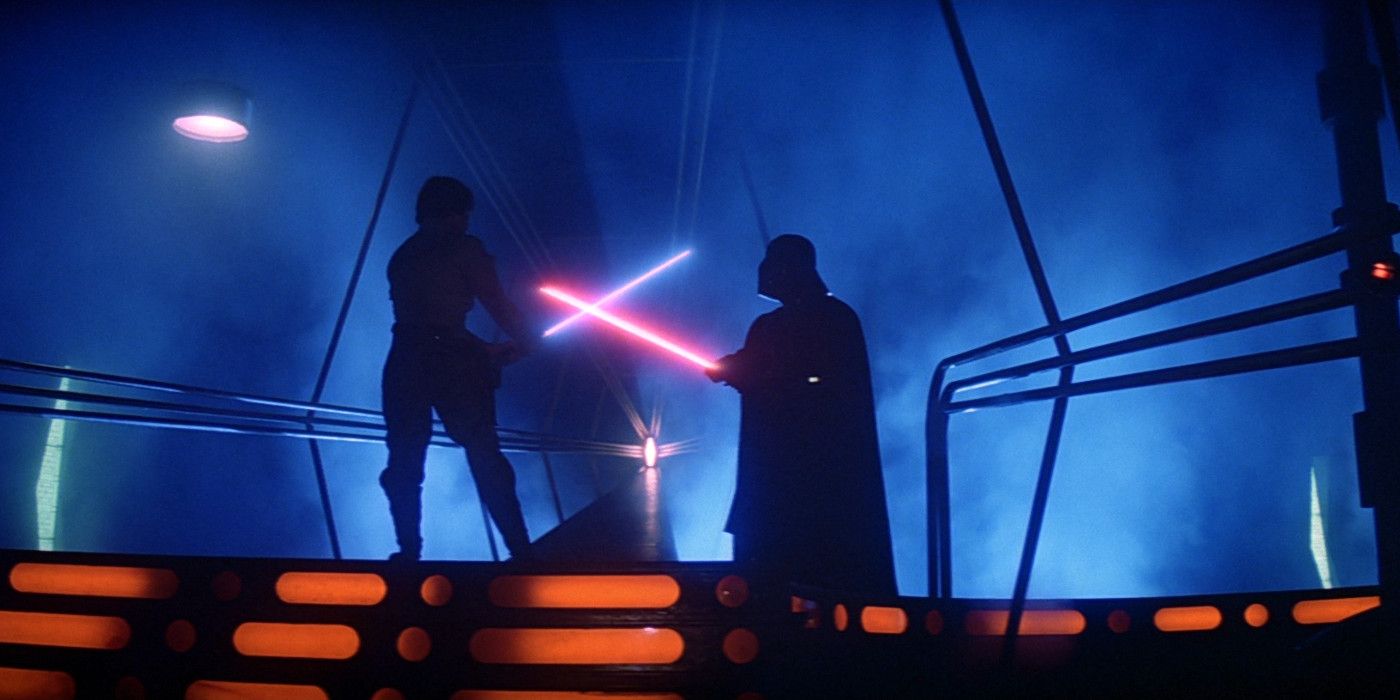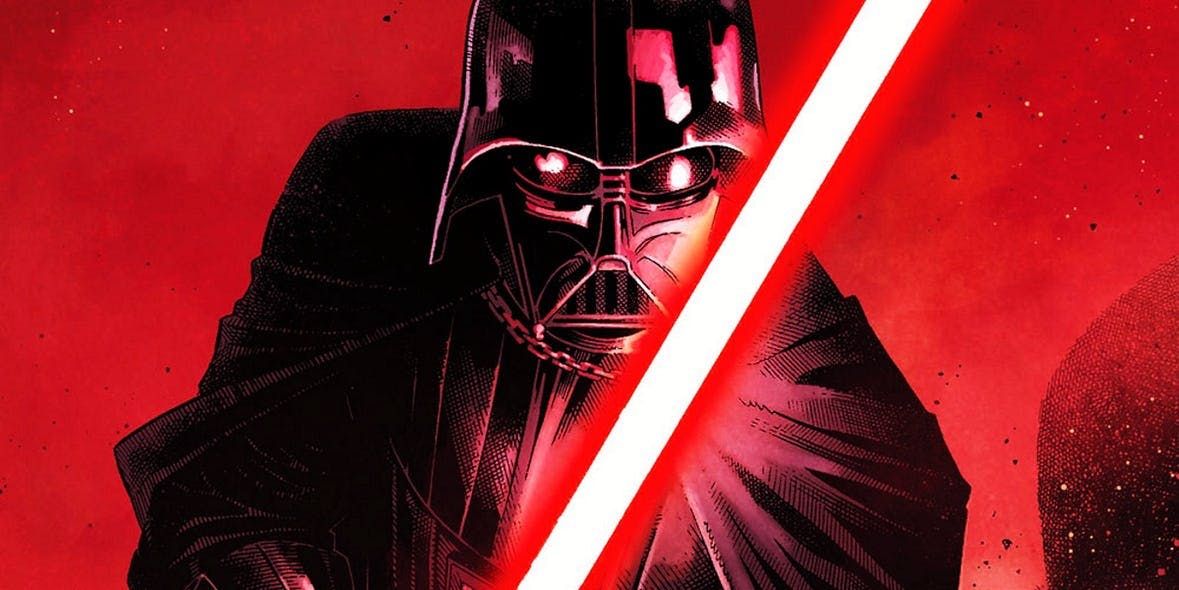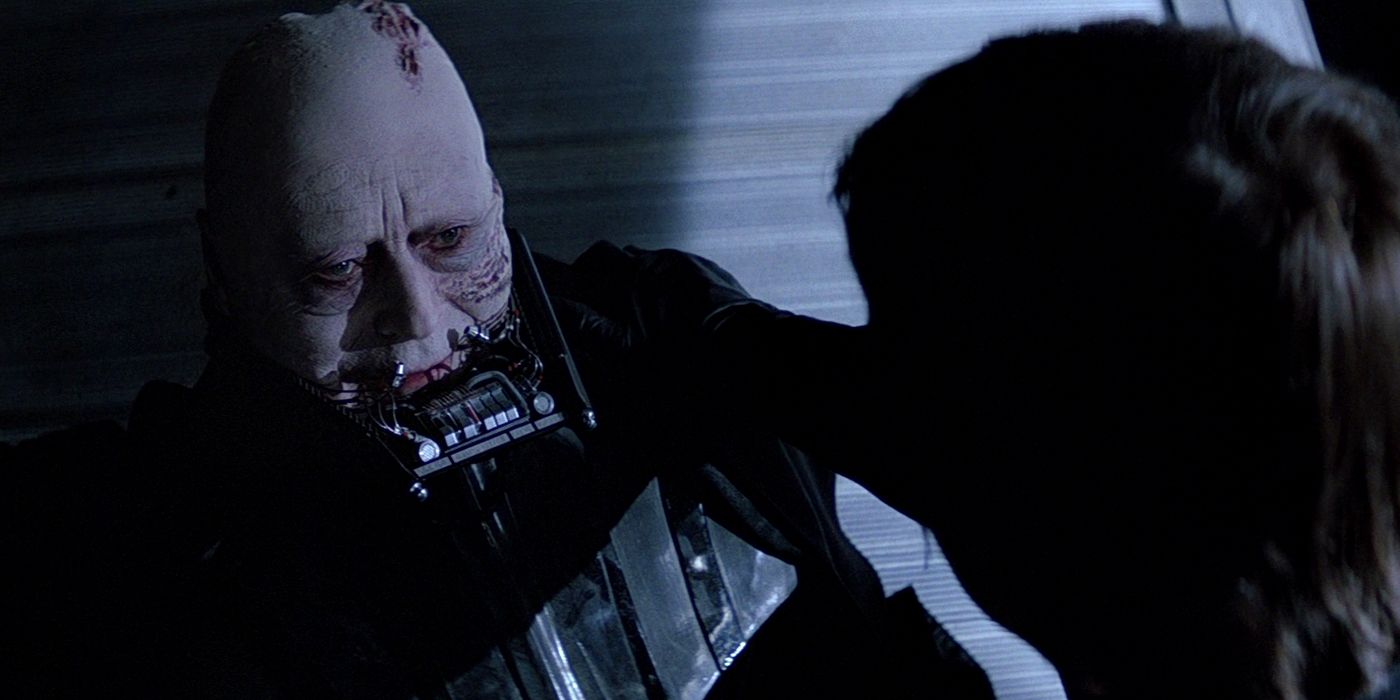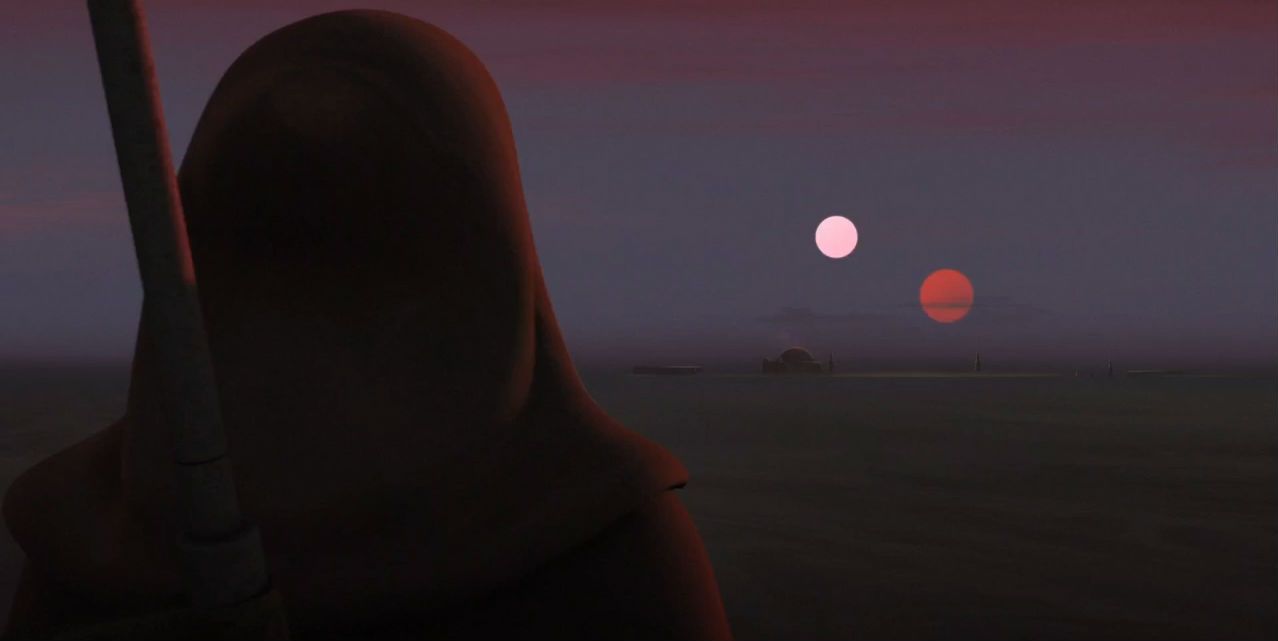When he first graced the silver screen in 1977, Darth Vader instantly became one of cinema’s most enigmatic villains. Before his true identity was so memorably revealed in The Empire Strikes Back, Vader was simply a monochromatic space samurai with a robotic face, a red laser sword, mystical powers, and the sultry voice of James Earl Jones. Forty years and an entire fictional universe later, the legend of Darth Vader has never been more dense.
In the process of collectively building the Anakin Skywalker/Vader mythos, most of us—from casual fans to the most die-hard Star Wars enthusiasts—have accepted commonly held narratives surrounding the character that may not be the most accurate.
The moment we saw Vader turn back to the light at the end of Return of the Jedi, we all had to fill in some blanks and deeply re-examine the character.
As we saw his backstory clumsily unfold in the much-maligned prequels, most of us sought to retcon the events of this pivotal character arc in our minds. Both of these things— as well as the overwhelming hype that constantly surrounds Star Wars— have likely contributed to the elements of Vader that we keep missing.
For those who long for some sense of course correction, here are the 15 Things Everyone Gets Wrong About Star Wars' Darth Vader.
He was not a “random miracle”
However you may feel about Anakin Skywalker’s immaculate conception, it’s become an integral part of the Vader myth. Most of us think of Anakin’s birth as something willed by the light side of the Force, but there may have been more sinister forces at work in the conception of the “chosen one."
In the de-canonized novel Darth Plagueis, the titular Sith Lord and his apprentice Darth Sidious are revealed to have had a hand in the creation of Anakin.
Since the novel is no longer part of Disney’s official Star Wars canon, the exact nature of Anakin’s birth remains a mystery. However, if Plagueis did play a role in creating Anakin, it would certainly complicate everything we know about Vader’s place in the galaxy.
He Didn't Kill Obi-Wan
One of the most pivotal moments of Star Wars: A New Hope is the lightsaber duel between Obi-Wan Kenobi and Darth Vader. It may be the least exciting lightsaber duel in the entire saga, but it’s outcome has implications on the rest of the series.
For decades, most of us have assumed that Vader killed Obi-Wan in the duel, as evidenced by Obi-Wan’s iconic line, “Strike me down and I’ll become more powerful than you can possibly imagine.” However, did Obi-Wan disappear out of his robes and into the invisible realm of the Force after Vader struck him, or just before?
One could easily argue either answer, but Luke Skywalker’s bitter-sweet end in The Last Jedi strongly suggests that Obi-Wan’s passing was completely of his own volition, and not really at the hand of Vader.
Obi-Wan Beat Anakin Fair and Square on Mustafar
The Obi-Wan/Anakin lightsaber duel in Revenge of the Sith is arguably the most important moment of the prequel trilogy. Both visually stunning and thematically rich, the battle would mark Anakin’s final steps toward the dark side, as well as the physical creation of Darth Vader.
Despite its importance to the larger story and the necessity of its outcome, many fans argue that Obi-Wan should not have been able to defeat Anakin one-on-one.
While it’s true that Anakin was likely at the height of his power in the final act of Revenge of the Sith, Obi-Wan was always a more skilled fighter. In the end, Obi-Wan’s tactical skills proved more prudent than Anakin’s force sensitivity as the two masters faced off on the treacherous terrain of Mustafar.
“Luke, I Am Your Father”
Whether you replayed the whole scene on the playground with your best friend, or repeated that one iconic line as a cheap joke at a party, chances are you’ve uttered the famous words, “Luke, I am your father,” more than once in your life. We’ve all said it a million times. Unfortunately, most of us have been saying it wrong for decades.
Re-watch the original scene from The Empire Strikes Back, and you’ll find that Vader actually says, “No, I am your father.” The difference is small, but not insignificant.
In context, Vader is responding to the accusation that he killed Luke’s father— a lie told to Luke by Obi-Wan in the previous Star Wars movie. “Luke, I am your father” may be a more streamlined soundbite, but it removes the violent back-and-forth dynamic of the original dialogue.
It Makes Sense That He Didn't Recognize C-3PO
Darth Vader made C-3PO. How weird is that to think about? It’s probably not something most of us realize when watching the original trilogy, but some fans have thought about it enough to wonder why Vader didn’t recognize 3PO as the droid he built as a boy.
Should Vader really have recognized C-3PO? There are a number of reasons why this observation, however provocative, ultimately rings false. The most obvious is that, when making the original trilogy, George Lucas hadn’t planned on a backstory that connected Anakin and 3PO.
We should also remember that Vader and 3PO only share one scene in the original trilogy. Vader might have recognized 3PO, but it’s more likely that, to him, the droid was just another protocol unit-- or merely a vague, subconscious reminder of the former self he fought so hard to suppress.
His control panel isn't useless
The control panel on Vader’s chest isn’t quite as iconic as his mask, but it’s certainly a memorable piece of his signature armor. People have been poking fun at Vader’s clunky chest buttons for decades, but the panel is not as useless as some might assume.
Not only does the control panel allow Vader to reset and regulate his life support system, but it also has more sinister functions consistent with Vader’s foreboding presence. One button on the control panel gives Vader a major energy boost without overpowering his life support system.
This means that, if you ever encounter the Dark Lord of the Sith in an adversarial way, you better hope he doesn’t press that button and eliminate whatever slim chance of escape you may have had.
He’s not purely “twisted and evil”
Obi-Wan Kenobi’s psychological assessment of Vader in Return of the Jedi (“He’s more machine than man now... twisted and evil”) is simple, poetic, and powerful... but is it wholly accurate? Vader’s redemption by the end of the same movie would prove otherwise, as would the the emotional buildup to the Dark Lord’s final moments with his son.
Early on in Return of the Jedi, Luke can intimately feel the conflict within Vader. The Force connection between father and son (which, in retrospect, may have been similar to the connection between Rey and Kylo Ren in The Last Jedi) seems to re-ignite whatever was left of Vader’s humanity— marking a transfer in the character from one-dimensional villain to complex fallen hero.
Vader may have been pretty darn “twisted and evil” at the height of his powers, but even the most archetypal figures tend to display some level of conflict within themselves.
He never completely ceased to be Anakin
From the moment he became a Sith Lord, Vader made every effort to repress his former self. For the most part, he succeeded, but not to the point of ever ceasing to be Anakin completely.
Most critics agree that the crowning achievement of Marvel’s current Star Wars comic run is the Darth Vader title. In both the first storyline— taking place after the events of A New Hope— and its current issues that trace his Sith career directly after Revenge of the Sith, the Vader comic gives us plenty of glimpses into the Dark Lord’s fractured, conflicted psyche.
Vader’s confrontation with Ahsoka in Star Wars Rebels also complicates the idea that Vader has completely replaced his former persona. Vader tells Ahsoka that he destroyed Anakin, but after the former Jedi padawan breaks Vader’s helmet and exposes part of his face, it’s clear for a brief moment that Anakin is still in there somewhere.
He’s Not the Main Baddie in A New Hope
Ask the first person you see, “Who is the central villain of Star Wars: A New Hope?” and they’ll probably say Vader. As you read this, you may be thinking, “Well of course they’d say that. Vader is the main villain of A New Hope.”
He may be the most memorable, but take a moment and ignore his place at the center of the whole saga. Is he really the main baddie of the first Star Wars film, or is it imperial mastermind Grand Moff Tarkin?
Brought to life by British genre veteran Peter Cushing, Tarkin was the more active of the two villains in furthering the plot of A New Hope and setting up the central conflict between the Empire and the Rebellion.
Tarkin may not be as visually memorable, but he was arguably a more central player than Vader (Although Peter Cushing’s cheekbones certainly hold a candle to Vader’s mask and samurai helmet).
He’s Not the most powerful Sith ever
You don’t have to think too hard to realize that Vader’s reputation has become a bit inflated, especially considering the more powerful Sith that preceded him.
Despite the fact that Vader overpowered him in the end, it could certainly be argued that Emperor Palpatine was (for the most part) a more powerful Sith. The Sith order claims a number of Dark Lords— Darth Bane, Revan, Darth Plagueis, Darth Nihilis— who may all have been more powerful than Vader, in more ways than one.
It’s easy to think of Vader as the most powerful Sith because of his central role in the Star Wars narrative. He was the “chosen one,” afterall, handpicked to overthrow the entire Jedi order and ignite the fire of the Galactic Empire. Reputation notwithstanding, story centrality doesn’t necessarily mean “most powerful.”
He and Palpatine aren't the only dark force users in the Empire
Tarkin was only partially right when he said that Vader was all that remained of the Jedi religion. Not only was Obi-Wan Kenobi alive and arguably well, but several other Dark Force users existed in the Empire’s heyday.
The Inquisitors were incredibly Force-sensitive progenitors of the dark side, as was Snoke— a character who we know was alive to witness the rise and fall of the Empire. The deeper we dig into the expanded universe, the more imperial-era Force users we find on both sides of the Force.
Much is being done across all mediums of the new Star Wars canon to diversify, demystify, and agnostitize the Force. It’s no longer only the privilege of a select few to wield its power, and the dark side of the Force wasn’t only reserved for Vader and Palpatine, even when they were the only Sith around.
Empire Strikes Back wasn't his first face-off with Luke
Few moments in cinema history carry more weight than the moment when Luke and Vader raise their lightsabers against one another for the first time in The Empire Strikes Back. However, casual fans may either be disappointed-- or pleasantly surprised-- to learn that this, in fact, was not the first time in canon that Vader and Luke confronted each other face to face.
In Marvel’s Star Wars 1: Skywalker Strikes, Luke briefly confronts Vader during a rebel mission to infiltrate an imperial weapons factory, only to heed Obi-Wan’s voice and run from the Sith Lord he believes killed his father. The scene is brief, but it clearly alters the dynamic of their second confrontation in The Empire Strikes Back.
He’s Not "Worse" than Anakin with a Lightsaber
A surface-level comparison of Anakin’s prequel-era lightsaber acrobatics and Vader’s stiff, hulking combat posture in the original trilogy will inevitably lead one to conclude that Anakin’s laser sword skills are superior. In reality, there’s hardly a disparity of effectiveness in the two fighting approaches, but a mere difference in style.
Vader’s stiff, robotic body keeps him from fighting the way he did as a Jedi, but he’s clearly altered his lightsaber craft to successfully incorporate his physical limitations. The best example of this the final Vader scene in Rogue One.
Vader uses his lightsaber seamlessly to deflect laser blasts and knows exactly when to strike with it. As Anakin, he was an agile physical force. As Vader, he’s a steam roller with a strategically applied lightsaber.
His name wasn't (originally) a clue to his identity
George Lucas has pointed out that Darth Vader’s name is a thinly veiled clue to his true identity. Translated directly from dutch, Darth Vader means “Dark Father”— a seemingly didactic suggestion that Vader is Luke’s estranged dad.
George Lucas may have publicly confirmed the intended meaning of Vader’s name, but it’s unlikely that this was the original intention. The name was in early drafts of the Star Wars script when Vader was not Luke, or anyone else’s father.
It’s possible that “Dark Father” was intended to have a broader meaning in its original context. Perhaps Vader was intended to be the “Father of Darkness” rather than a dark father of any specific character. It’s impossible to know for sure, but the evolution of the Star Wars story simply negates Lucas’s account of the name’s origin.
He probably wasn't “the chosen one”
Was Anakin Skywalker really the “chosen one” meant to restore balance to the Force? Competing theories abound across the Star Wars fanscape. For many, the most obvious answer is yes-- Anakin eventually fulfilled his destiny by destroying the Emperor and passing the baton onto his son to restore the Jedi order. Others contend that Luke was actually the chosen one.
Here’s the thing: there probably was never a real “chosen one” to begin with. The chosen one prophecy has Jedi origins, which immediately makes its validity suspect. Outside the limited scope of the original trilogy, the Jedi aren’t the knights in shining armor we once imagined them to be.
The flaws in their dogma have been thoroughly examined in both the prequel and sequel trilogy. We’ve all come to accept that the Jedi can be full of it, so why do we continue to put any stock in a Jedi prophecy that led to grief and destruction.
---
What's your hot take on Darth Vader? What does everyone get wrong? Did we get anything wrong? Let us know in the comments!

